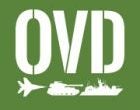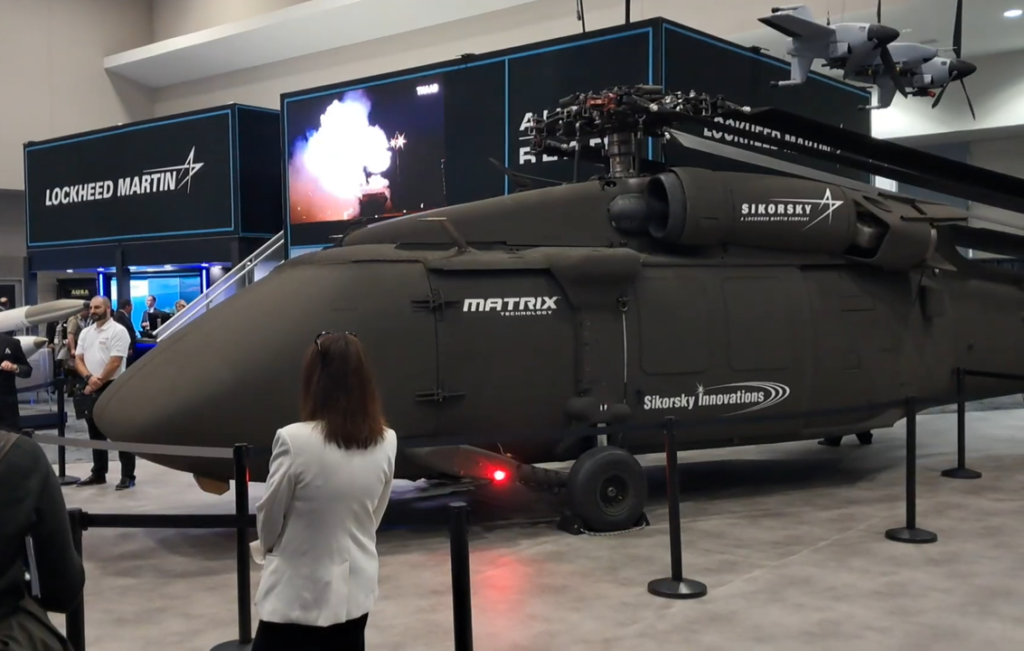AUSA 2025: New Unmanned Blackhawk Unveiled by Sikorsky
This Monday, AUSA kicked off with a major announcement. At 10:00 AM, Sikorsky (a subsidiary of Lockheed Martin) announced their brand-new U-Hawk— a fully autonomous version of the Blackhawk helicopter. By ditching the pilots and replacing the cockpit with clamshell doors and a utility ramp, the U-Hawk gains about 25% extra cargo space, allowing it to carry larger payloads such as a HIMARS pod of six rockets, or even an unmanned vehicle which can roll directly out of the U-Hawk’s nose. Whereas a manned Blackhawk can carry up to two Joint Modular Intermodal Containers, the U-Hawk can carry up to four.
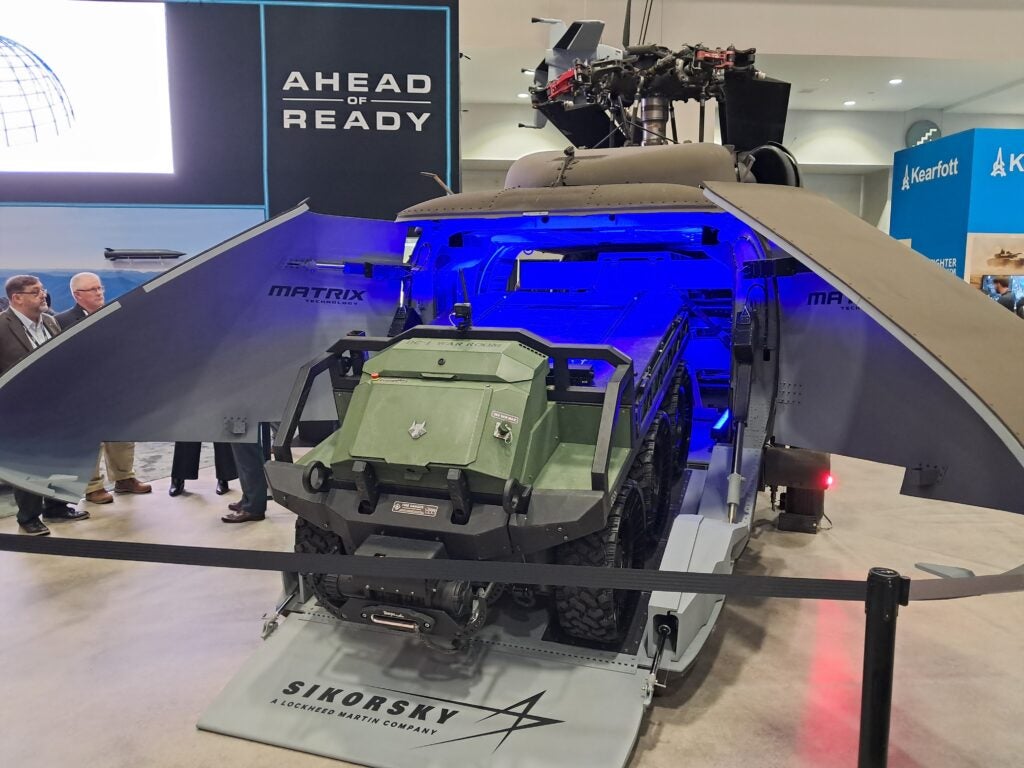
Ramsey Bentley, Director of Advanced Concepts and Innovations at Sikorsky, explained why having the ability to carry these payloads internally is such a big deal.
“What is critical about the internal transportation or the internal loading of the aircraft is it allows us to fly faster than if we have an external load. So if we had the load beneath the aircraft, it would be a slower flight speed. We’re able now to fly at normal speeds. We see this aircraft supporting movement; you can have another aircraft that’s loaded with soldiers and this aircraft is flying along with them, bringing all of their equipment. So because this is an internal load capability, then the two aircraft would fly together.”
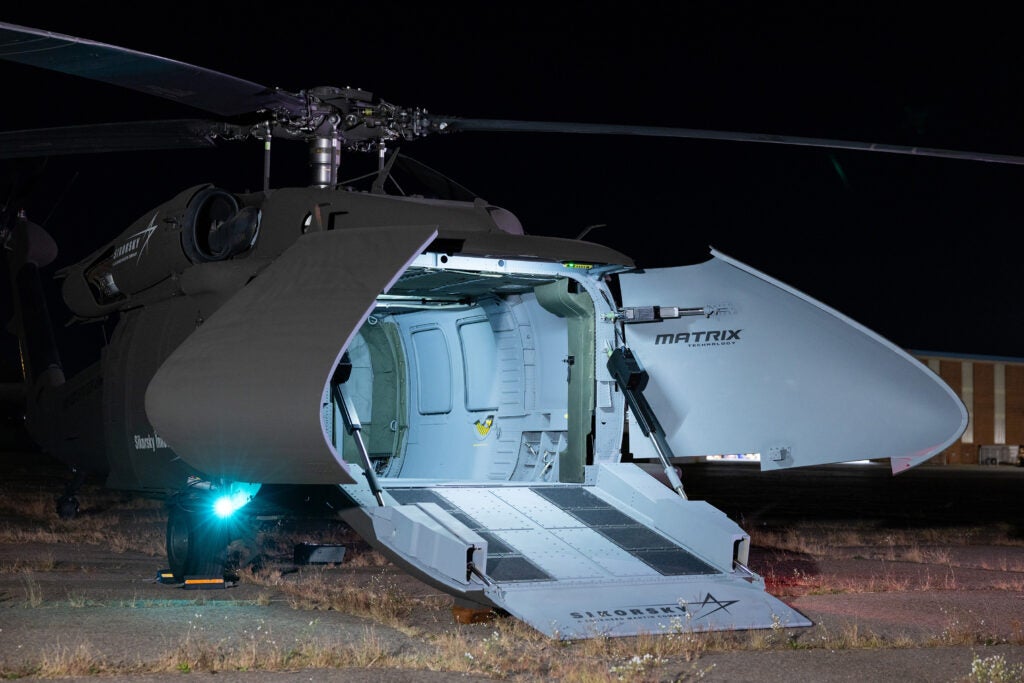
Yet, while the potential of the U-Hawk as a logistics platform is impressive, it also has the potential to play a more direct battlefield role. At the center of this, is the new “quiver” launching system which allows the U-Hawk to launch a wide variety of drones and ordnance. According to Bentley, this gives the U-Hawk great potential as a loyal wingman.
“Let’s think about an Apache. An Apache is able to carry Hellfire and JAGM Missiles, rockets, good stuff. But we could team the U-Hawk with an Apache and the U-Hawk is carrying all the launched effects. So as the Apache is doing its reconnaissance mission, this aircraft is nearby, sending the launched effects, that is going forward doing the reconnaissance, and now the Apache can apply its kinetic effects with Hellfires and JAGMs. And so the whole idea there is how are we giving additional capability not only to the aviation maneuvers but to the ground maneuvers? So you think about the U-Hawk on an air assault. It’s flying in ahead of the soldiers as it comes into the area of operations. It dispenses launched effects. Command of those launched effects are turned over to the soldiers coming in on the next aircraft. Then it lands, releases the UGV, which is also under the command of the soldiers that are inbound, and then it can take off and provide additional launch defects. So it’s in direct support to the maneuver commander and into their scheme of maneuver.”
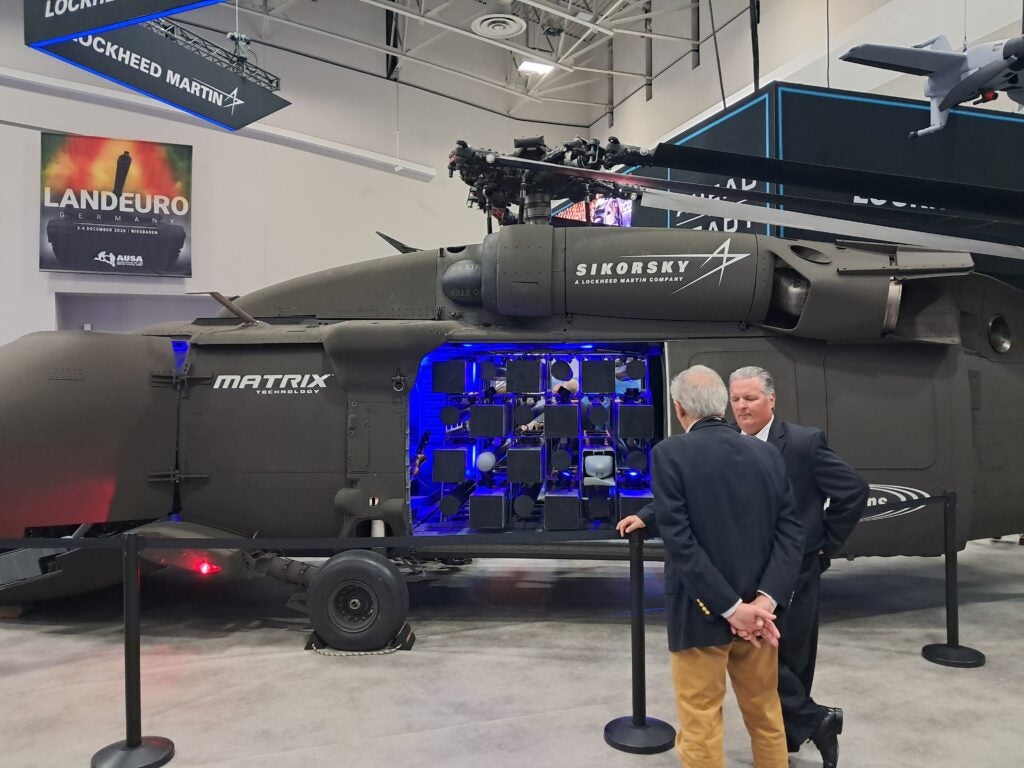
The additional cargo space also helps keep the U-Hawk on the battlefield for longer as additional fuel tanks can be fitted inside the aircraft. Reportedly, it can self-deploy over 1,850 miles (3,000km) or loiter for up to 14 hours without refueling. This also adds to its utility beyond the battlefield. For example, the autonomous helicopter is well-suited for fighting forest fires.
Operation of the U-Hawk is also easy. No dedicated pilot is required. An operator can learn everything they need in a couple of minutes.
“We have had anywhere from a young private first class in the Marine Corps up through senior leadership fly our autonomous aircraft. Our experience is we give them the tablet, give them a couple minutes and then they’re like ‘leave me alone, I got it!’ We’ve done external load operations, internal load operations, we’ve done personnel recovery operations, all with a soldier at the tablet flying that mission.”
While an individual soldier can operate the U-Hawk with a tablet, there are other options on the table. One operator can task the U-Hawk with flying to a destination, and a second operator at that destination can take over and issue their own orders. The “software stack” responsible for controlling the aircraft can also be integrated with other command and control systems. For example, the tactical operations center at a brigade or division level, or a sustainment facility focused purely on logistics, can operate a fleet of U-Hawks remotely.
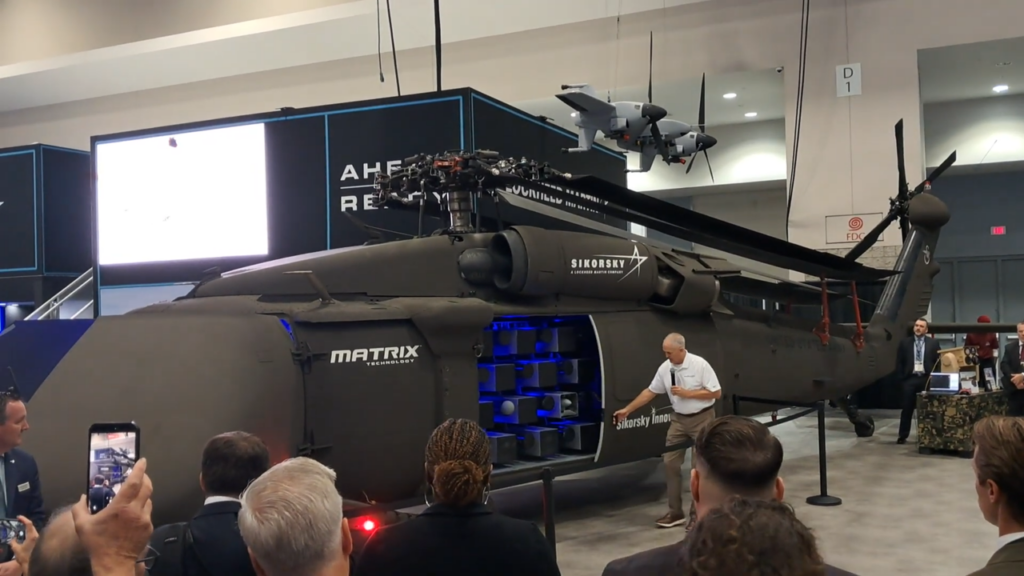
Bentley also elaborated on the capabilities of the Matrix autonomy stack which enables the U-Hawk. This system matured through its application on other airframes. Most notable among them is the optionally manned variant of the Blackhawk which was developed in cooperation with DARPA and saw extensive flight testing.
“One of the unique things about our matrix autonomy is even the startup and the shutdown or the aircraft is all autonomous. So the soldier or the operator literally touches one button that says ‘crank’ and the aircraft does all of the pre-flight procedures. It does all the engine run-ups, checks all the systems and then it lets you know when it’s ready to go. The other thing we’ve instituted is what we call mission task. So you actually assign the aircraft a mission task, like reconnaissance, external load operations, internal load operations. You tell the aircraft where you want it to go, then the aircraft executes that mission. The aircraft has sensors and autonomy on board that allows it to see and avoid obstacles. We can integrate threat avoidance, everything else. So really the aircraft does not require intervention. Once you give it the mission task, it even has the capability to pick out emergency landing zones and do all of the emergency procedures just like a human crew would.”
Even landing aboard ships which are rolling and pitching is possible.
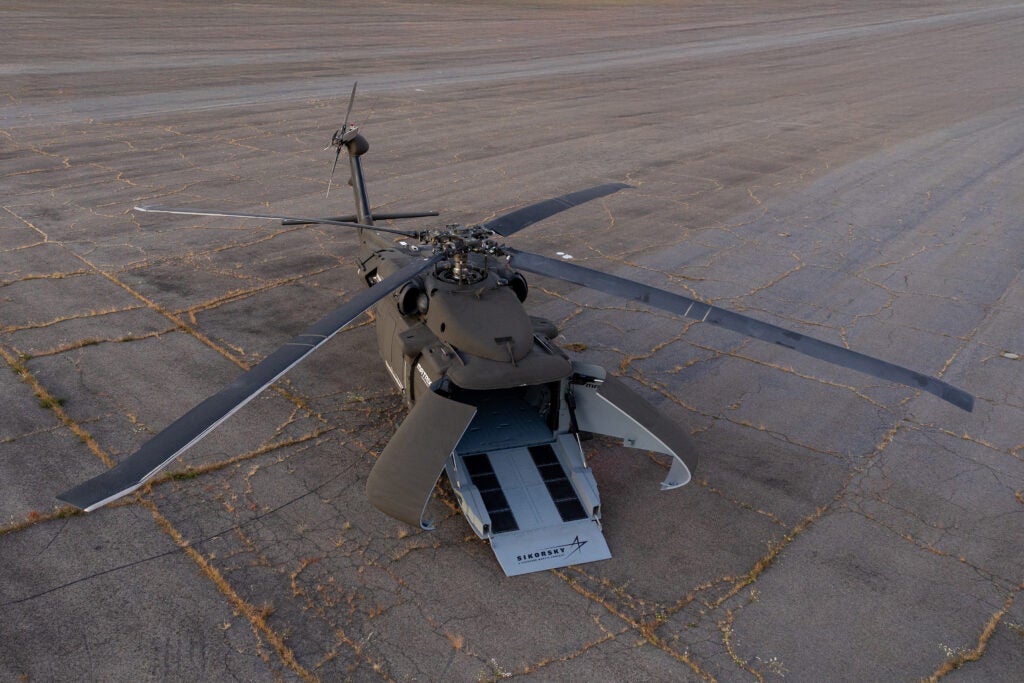
“We have demonstrated an ability to take off and land, and that’s one of the key things about the Matrix technology. With the sensor package and everything else is it’s providing real-time feedback, and the aircraft is able to adjust to those changing conditions to those changing conditions.”
Moreover, while the autonomous capabilities of the aircraft are promising, it is also a relatively economical procurement option. It has 98% of parts in common with manned Blackhawk models. Existing Blackhawks can be converted to U-Hawks at a much lesser cost than the procurement of a whole new airframe. Compared to its manned predecessors, it is also cheaper to operate.
“One of the key things that the Army has to pay for in their sustainment program is the crew. With the U-Hawk, we’re not having to send a pilot through flight school, we’re not sending a crew chief through training, and we’re not doing that yearly currency training progression that we’d be doing on the crew. All of that money, you know, all those resources can be pooled to do other things.”
The brand-new prototype was created in just 10 months from concept to concrete. Current plans are to have the U-Hawk flying in 2026.
